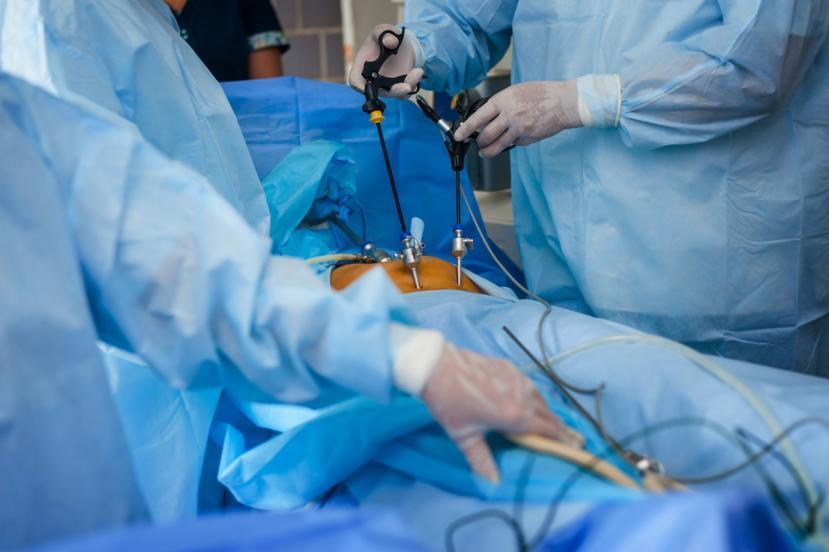Reasons Why You Need a Laparoscopy

Laparoscopy involves the inspection of the abdominal organs or the female pelvic organs through the use of a thin, lighted tube that is inserted through an incision made in the belly. It is used to locate complications such as adhesions, cysts, infections, and fibroids. The tube used in the procedure is called a laparoscope. This surgical procedure can also be used in collecting tissue samples for biopsy.
In most cases, a laparoscopy is done instead of a laparotomy because the latter requires a much larger incision. A laparoscopy is also more affordable and with fewer complications compared with a laparotomy. Under normal circumstances, you will not be required to stay overnight in the hospital.
When is it used?
Laparoscopy can come in handy when trying to diagnose a number of medical conditions that affect the abdominal or pelvic area. It can also be used during surgical operations to get rid of the damaged organs or taking tissue samples from the organs for further tests. It is mostly used in the following areas:
- Gynecology - it is the study and diagnosis of medical conditions in the female reproductive system.
- Gastroenterology - is the study and treatment of medical complications related to the digestive system.
- Urology - is the study and diagnosis of conditions related to the urinary system.
Why is it done?
A laparoscopy is performed to:
- Check for tumors or any other abnormal growth in the abdominal or pelvic area, and treat them if possible.
- Diagnose medical conditions such as pelvic inflammatory disease, ectopic pregnancy, and endometriosis, among others.
- Detect conditions that may hinder pregnancy in women. Some of these conditions are adhesions, cysts, infections, and fibroids. This procedure only becomes an option if other fertility tests fail to tell the actual cause of infertility.
- Perform a biopsy.
- Check for the status of cancer in the body, if any.
- Check for any internal damage in case of an injury or accident.
- Perform a tubal ligation.
- Correct an inguinal hernia or a hiatal hernia.
- Remove (fully or partially) damaged organs such as spleen, uterus, ovaries, gallbladder, colon, or appendix.
- Detect the source of a persistent abdominal or pelvic pain.
How a Laparoscopy Is Done
Laparoscopy is usually performed by a gynecologist, a specialist who treats diseases of the female reproductive organs. General anesthesia is used in most cases, but other kinds of anesthesia such as spinal anesthesia may also be used. You should discuss with your doctor which type of anesthesia is the best choice for you.
You will be required to empty your bladder about an hour prior to the surgery. Any necessary medications will be given to you through an intravenous (IV) line in your arm or hand. A sedative will also be administered through the IV line to help you relax during the procedure.
You will undergo a number of other procedures after the anesthesia has taken effect and you are asleep or just relaxed.
- An airway will be put in your throat to facilitate breathing when you are under anesthesia.
- A urinary catheter (a thin flexible tube) may be inserted through the urethra to drain the bladder.
- A portion or all of your pubic hair may be shaved.
- A special soap will be used to clean your belly and pelvic region.
- The surgeon may perform a pelvic examination before inserting a cannula (a thin tube) into the vagina all the way to the uterus. This surgical tool enables the doctor to move the uterus and ovaries to have a clear view of the organs along the belly.
During a laparoscopy, the number of small incisions will depend on how many tools will be used during the procedure. A gas (most probably carbon dioxide) will be pumped into the belly through the first incision. The reason for inflating the belly is to allow the doctor or surgeon to get a better look at the organs.
A laparoscope is then inserted into the belly through one of the incisions for the purpose of getting a clear view of the organs. Other tools may be applied when fixing a damaged organ, draining cysts, or taking tissue samples. A laser is normally connected to the laparoscope to assist during surgery.
When the surgical procedure comes to an end, all the tools involved and the gas will be removed. The cuts (incisions) will then be stitched and covered with a bandage. The good news is that the scars will be small since the incisions were also small. The scars will eventually fade away over time.
The procedure normally lasts for 30 to 90 minutes depending on how things will turn out. It can take longer if a medical condition like endometriosis is detected and needs to be treated right away. You will then be moved to a recovery room where you will stay for 2 to 4 hours before you are released from the hospital. You should be able to get back to your daily activities if all goes well, as long as they don’t involve strenuous activities or exercises.
Gynecologic Laparoscopy
Gynecologic laparoscopy is a surgical procedure that can be performed instead of an open surgery. It involves the use of a laparoscope to observe the interior of your pelvic region. An open surgery needs a relatively larger cut (incision) for it to be performed.
This procedure can be used to check any medical conditions that may be present and can also be a treatment option.
Below are a number of medical conditions that can be detected through laparoscopy:
- uterine fibroids
- endometriosis
- tumors or cysts in the ovary
- pelvic abscess
- ectopic pregnancy
- painful scar tissues or pelvic adhesions
- pelvic inflammatory disease
- infertility
- reproductive cancer
It can also help in the following treatments:
- removal of ovaries
- getting rid of ovarian cysts
- removal of the uterus (hysterectomy)
- getting rid of fibroids
- stopping blood from flowing to the fibroids
- treating endometriosis (endometrial tissue ablation)
- adhesion removal
- tubal ligation reversal
- treating a prolapsed uterus through vault suspension
Risks Associated with Laparoscopy
The most common complications that come with laparoscopy are infections and skin irritation. There are other rare complications such as:
- damage to the bladder, abdominal blood vessels, uterus, bowels, and other organs that are found in the pelvic area
- nerve damage
- blood clots
- allergic reactions
- urinating problems
There are a number of factors that may increase your chances of having complications during the procedure. They include:
- being obese or overweight
- severe endometriosis
- being underweight
- previous abdominal surgery
- pelvic infections
- chronic bowel disease
Complications After Surgery
There are a number of minor or severe post-surgery complications that you can experience. The minor ones include:
- bruising and minor bleeding around the cut (incision)
- infections
- nausea and feeling sick
Severe complications include:
- damage to any of the abdominal organs such as the bladder or bowels
- primary artery damage leading to an excessive bleeding
- the gas used to inflate the belly may cause bubbles in the arteries and veins
Call your doctor or other health care providers if you observe anything unusual after your surgery. Remember to ask your doctor about the complications that may arise as a result of the surgery, so that you may note any abnormalities.















